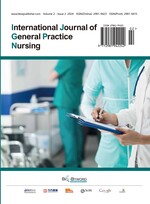Abstract
Objective: To analyse the overall nutritional status of 25 hydroxyvitamins in the population of the Baoding area, and to explore the factors influencing it. Methods: 2,022 patients who attended the Affiliated Hospital of Hebei University from July 2022 to July 2023 were selected as study subjects. Serum 25(OH)D levels were measured, and the differences in the distribution of serum 25(OH)D levels among different genders, ages, and seasons in Baoding were analyzed. Results: The mean serum 25(OH)D level of adults in the Baoding area was 16.19 ± 6.63 ng/ml, with a deficiency rate of 78.4% (1585/2022) and an insufficiency rate of 18.0% (364/2022). The serum 25(OH)D deficiency rate in adult males was 67.7% (113/167), and the difference was not statistically significant (P > 0.05) when comparing the deficiency rates of all age groups. The serum 25(OH)D deficiency rate in adult females was 79.4% (1472/1855), and the difference was statistically significant when comparing the deficiency rates in all age groups (P < 0.05). The adults in summer had the highest 25(OH)D levels, with a sufficiency rate of 1.8% (36/2022), and the difference was statistically significant when comparing the 25(OH)D levels of adults in different seasons (P < 0.01). Conclusion: The rate of vitamin D deficiency and insufficiency in the population of the Baoding area is high, so it is necessary to strengthen the publicity and education for the residents of the Baoding area, to improve the residents’ knowledge of vitamin D, and to take effective measures to improve the vitamin D level of the residents, and special attention should be paid to vitamin D supplementation of the adult females between the ages of 18–44 years old.
References
Xia WB, Zhang ZL, Lin H, et al., 2018, Consensus on the Clinical Application of Vitamin D and its Analogues. Chinese Journal of Osteoporosis and Bone Mineral Salt Diseases, 11(01): 1–19.
Yang M, Kang DM, 2019, Relationship between Serum 25-hydroxyvitamin D Levels and Metabolic Syndrome, Glucose Metabolism, and Bone Mass in Elderly Diabetic Patients. Chinese Journal of Gerontology, 39(22): 5453–5456.
Zhang T, Lu S, Yin QZ, et al., 2019, Study on the Correlation between Vitamin D Deficiency and the Occurrence of Osteoporosis and Reduction of Skeletal Muscle Mass in Elderly Patients with Type 2 Diabetes Mellitus. Chinese Journal of Osteoporosis, 25(08): 1110–1115.
Liu W, Hu J, Fang Y, et al., 2021, Vitamin D Status in Mainland of China: A Systematic Review and Meta-analysis. eClinical Medicine, 2021(38): 101017. https://doi.org/10.1016/j.eclinm.2021.101017
Wang Z, Song W, Yang B, et al., 2022, Exploring the Relationship between Serum Bilirubin, 25 Hydroxyvitamin D3 Levels and Insulin Resistance in Vitamin D-deficient Type 2 Diabetic Patients. Laboratory Medicine and Clinics, 19(22): 3139–3142.
Mohammadi S, Hajhashemy Z, Saneei P, 2022, Serum Vitamin D Levels in Relation to Type-2 Diabetes and Prediabetes in Adults: A Systematic Review and Dose-response Meta-analysis of Epidemiologic Studies. Critical Reviews in Food Science and Nutrition, 62(29): 8178–8198. https://doi.org/10.1080/10408398.2021.1926220
Weldegiorgis TZ, Hidru TH, Yang XL, et al., 2020, Association between Serum 25-hydroxyvitamin D Concentrations and Metabolic Syndrome in the Middle-aged and Elderly Chinese Population in Dalian, Northeast China: A Cross-Sectional Study. Journal of Diabetes Investigation, 11(1): 184–191. https://doi.org/10.1111/jdi.13086
Yao Q, Wang X, Zhang L, et al., 2020, Study on Serum Vitamin D Level in Male Patients with Type 2 Diabetes Mellitus with Metabolic Syndrome. Chinese Journal of Osteoporosis, 26(10): 1495–1499.
Wang R, Shi LX, Peng NC, et al., 2019, Analysis of Metabolic Syndrome-related Indicators and their Correlation with Serum 25-hydroxyvitamin D Levels in 1214 People from a Community. Journal of Guizhou Medical University, 44(03): 283–288. https://doi.org/10.19367/j.cnki.1000-2707.2019.03.008
Li C, Gao YH, Zhang J, et al., 2022, A Cohort Study of Vitamin D Levels and Sleep Status and Cardiovascular Disease Risk in an Elderly Population. Journal of Clinical Cardiovascular Disease, 38(12): 975–979. https://doi.org/10.13201/j.issn.1001-1439.2022.12.009
Xu JY, Chen TY, Zhang SN, et al., 2022, Detection of Serum 25 Hydroxyvitamin D Level and Analysis of Vitamin D Nutritional Status in a Beijing Population. Journal of Clinical Military Medicine, 50(11): 1197–1199 + 1202. https://doi.org/10.16680/j.1671-3826.2022.11.26
Wang Q, Qian YH, Huang HQ, et al., 2023, Survey on the Prevalence of Vitamin D Deficiency in 28194 Patients and Analysis of Risk Factors. Chongqing Medicine, 52(15): 2305–2309 + 2314.
Bao JJ, Dai FF, 2019, Investigation of the Relationship between Vitamin D Level and Season in 3326 Cases of Nanjing Area Population. Chinese Journal of Osteoporosis, 25(02): 259–262.
Gao SN, Chen X, 2022, Relationship between Vitamin D Levels and Gender, Age and Season in Adults in Shanghai. Chinese Journal of Osteoporosis, 28(02): 280–284.
Lang AQ, Sun QZ, He W, et al., 2022, Detection and Analysis of Serum Vitamin D Levels in Orthopaedic Outpatients of a Hospital in Yunnan Province. Chinese Journal of Osteoporosis, 28(01): 66–69.
